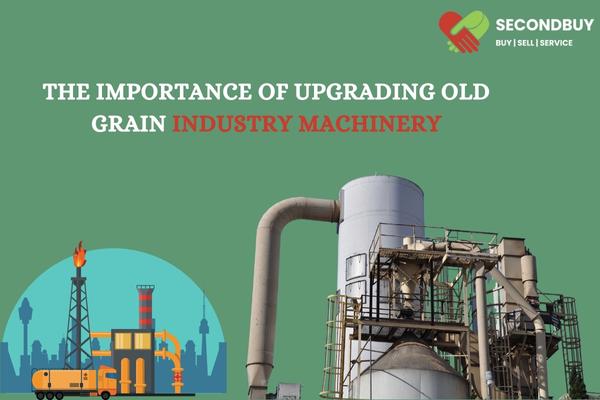The Importance of Upgrading Old Grain Industry Machinery: Enhancing Productivity and Profitability
In the world of agriculture, the grain industry plays a pivotal role in providing the staple foods that sustain populations across the globe. However, the efficiency and quality of grain processing and milling depend heavily on the machinery used. Over time, old grain industry machinery can become outdated, leading to reduced productivity and profitability. In this blog, we'll explore the significance of upgrading old grain industry machinery, focusing on rice processing and milling machines.
The Challenges of Old Grain Industry Machinery
Decreased Efficiency : Old machinery often lacks the advanced features and technologies found in modern equipment. This results in slower processing times and higher production costs, ultimately reducing efficiency.
Inconsistent Qualit : Outdated machines may struggle to maintain the quality and purity of grains, leading to product inconsistencies that can negatively impact market competitiveness.
Maintenance Costs : Older equipment tends to require more frequent repairs and maintenance. This not only adds to operational expenses but also increases downtime, affecting production schedules.
Compliance and Safety : As industry standards and regulations evolve, older machines may no longer meet safety or environmental requirements, potentially leading to legal issues or fines.
The Benefits of Upgrading
Improved Efficiency : Upgrading to modern grain industry machinery can significantly boost processing speed and accuracy. Advanced automation and control systems ensure consistent and efficient operations.
Enhanced Product Quality : Newer machinery is designed to maintain the highest product quality standards, resulting in a more appealing and marketable end product.
Reduced Maintenance Costs : Modern equipment is engineered for durability and longevity, reducing the need for frequent repairs and maintenance. This translates to long-term cost savings.
Compliance and Sustainability : Upgraded machinery often comes with eco-friendly features and meets the latest safety standards, ensuring compliance and reducing the risk of legal issues.
Increased Profitability : Ultimately, enhanced efficiency and product quality, coupled with reduced operating costs, lead to increased profitability for grain industry businesses.
Precision Milling : Modern rice milling machines offer precise control over the milling process, resulting in higher yields and better-quality rice.
Energy Efficiency : Newer rice processing machinery is designed with energy-saving features, reducing operational costs and environmental impact.
Quality Assurance : Upgraded machines incorporate advanced sorting and grading technology, ensuring uniform grain quality, which is essential for both domestic and international markets.
Customization : Many modern rice milling machines allow for customization of processing parameters, catering to specific market demands and product variations.
In addition to the tangible benefits of increased efficiency and profitability, upgrading old grain industry machinery also positions businesses for long-term sustainability. With the world's population steadily growing, the demand for grain products is ever-increasing. To meet this demand while minimizing environmental impact, it's essential for the grain industry to adopt eco-friendly practices and machinery.
Modern grain processing and milling machines often come equipped with features designed to reduce waste, optimize resource utilization, and minimize energy consumption. These sustainable practices not only benefit the environment but also resonate with environmentally-conscious consumers, thereby expanding market reach and potential.
Furthermore, embracing technology-driven upgrades in the grain industry enhances its resilience against various challenges, including fluctuations in commodity prices, supply chain disruptions, and changing consumer preferences. Businesses that invest in state-of-the-art equipment are better equipped to adapt to these challenges and remain competitive in a dynamic marketplace.
Conclusion
upgrading old grain industry machinery, such as rice processing and milling machine s, is more than just a business decision—it's a strategic move towards a more efficient, sustainable, and profitable future. By investing in the latest technology and machinery, grain industry businesses can ensure a steady supply of high-quality products, reduce their environmental footprint, and position themselves for long-term success in a world that increasingly values sustainability and innovation.

